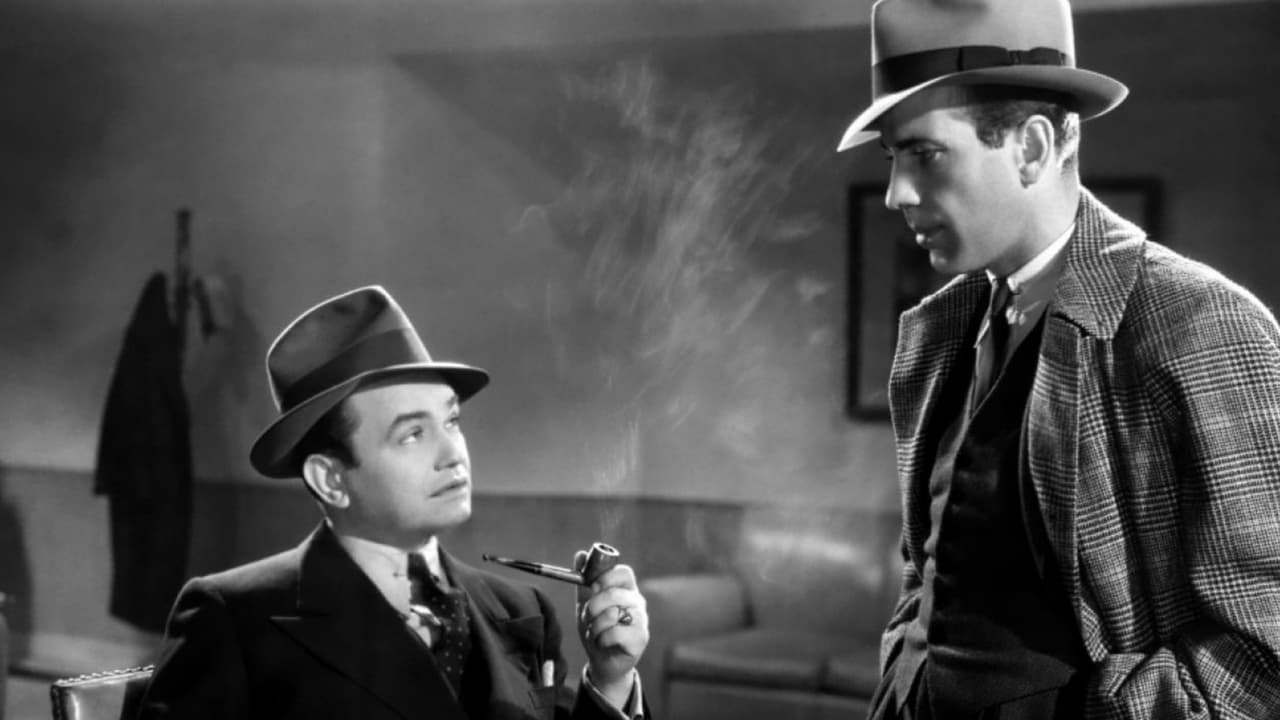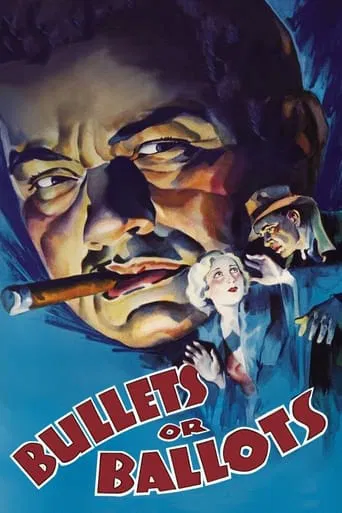

"Bullets or Ballots" is a good 'cops and robbers' movie from Warner Bros., headquarters for gangster pictures in the 30's. It has all the gangster stars on the lot - Humphrey Bogart, Edward G. Robinson, George E. Stone, Barton McLane and a score of well-known character actors. It also features Joan Blondell, everybody's sweetheart in Warner films of the time.The 'racket' here switches from protection to the numbers game, and has Robinson as a racketbuster cop going undercover to unearth McLane's bosses. Robinson is a tough cop with the underworld's respect, although it is humorous to see him intimidate guys a foot taller than he is. Anyway, he infiltrates and the story unfolds in the expected manner, but as only Warner Bros. could tell it. Not a lot different from others of its type but the flashy cast puts this one over. If you haven't seen it and you are a fan of the genre, do so.
... View MoreWard Bryant is an anti-corruption crusader making his newsreels denouncing racketeers who have taken over the city and stealing as much as $200 million. Crimelord Al Kruger (Barton MacLane) warns thug Bugs Fenner (Humphrey Bogart) to leave Bryant alone but Bryant is shot to death anyways. Uncorruptable Dan McLaren is hired as the new police commissioner and he starts to clean house. Streetwise Johnny Blake (Edward G. Robinson) gets discharged from the force. Lee Morgan (Joan Blondell) wants him to join her in her numbers game. Al Kruger hires Blake after he punches out his former friend McLaren in public, but Bugs is suspicious of the former cop. When more suspicions fall on him, he suggests to Kruger to take over the numbers game and make it bigger.This is not the hardest gangster movie despite having legendary Bogart and Robinson. It's cool to see them. The gun play is minimal. It's a hard talking gabfest. I really don't buy Kruger letting Johnny Blake into every aspect of his organization so quickly. Bugs should be the normal reaction. It would be fine if he's let into the organization but he shouldn't have a VIP pass.
... View MoreSo I'm four feet tall, fat and ugly, but I'm the toughest guy on the force, see? And my name is Johnny Blake, only I look more like Immanuel Blakenstein, get it? Jack Warner told me I can't play gangsters any more, so now I'm a cop. A fat, ugly, four foot tall cop who looks like a clown air-punching guys twice my size. Then I get canned from the force, see? But really I'm going undercover, and I'm really a good cop who's out to shut down the rackets. It's okay, my old pal Bogart is playing the second banana hood, and the two of us have a shoot out at the end. I don't really point my gun, I just close my eyes and shoot in the air, and then you see him fall. This ain't KEY LARGO, kids.But say, what the hell! Bogart got me too. So then my best girl picks me up in her car, and we spend about ten minutes talking about how our love was meant to be, and all the while I'm gut shot. You can see on my face, I'm in pain, only it really looks like I've got gas. Gas, get me? Like I've been eating too much pompano, and mixing it with champagne. Or maybe I ate too much of that new Soylent product, Soylent Green. Now that's a picture! BULLETS OR BALLOTS is the kind of movie that makes a guy want to go to the Exchange, and tell them all about Soylent. And then go home.
... View MoreOkay, I'll admit that MOST of the Warner Brothers films of the 1930s starring actors like Cagney, Bogart and Edward G. Robinson were predictable and formulaic. But, they were also very entertaining and the public loved them. I happen to be a real fan of the films but know that they aren't exactly "high art" or always 100% believable! Well, this is such a film, as you really need to suspend disbelief and just sit back and enjoy--and boy, did I enjoy this dandy film.Robinson played a tough as nails detective who used to be a force to be reckoned with in the police department, but in recent years instead of smashing organized crime, he's been reassigned to more mundane activities. And, he's got REAL ATTITUDE, as when hoods see him on the street, he's likely to slug them if they don't show him "proper respect". At the same time, the grand jury is outraged by the proliferation of organized crime, so they appoint a new Police Commissioner. However, unexpectedly, this new Commissioner unexpectedly fires Robinson instead of having him return to his old mob-fighting ways! Now at this point, considering who Robinson's character was, it seemed obvious that his being fired was NOT "strictly on the level". Where this goes and how the movie wraps everything up, I'll leave to you.The acting is fun and exactly what you'd expect from an old gangster picture. The combination of Robinson, Barton MacLane and Bogart as the leads is exceptional and is sure to please, though I must admit that MacLane's character, at times, seems a bit stupid and gullible--he wasn't the best written character in the film.
... View More